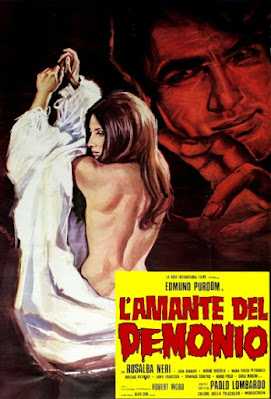Fun is only partially the name of the game with a film like Bloody Pit of Horror. With its comic book style influence, there’s lots of fun to be had, but it’s got a mean side too, as sadism is also the name of the game. The mix of fun and dark in the film is an influence from a style of Italian adult-oriented superhero, crime, and erotic comics known as Fumetti Neri, which consists, among many others, of flamboyant masked super heroes/villains: Diabolik, Kriminal, Mister-X, and Satanik. The antagonist in Bloody Pit of Horror could’ve easily come out of this subgenre, but he’s no fantastic masked superman. He’s a fantastically cruel masked super-sadistic-madman, the Crimson Executioner, played with love, enthusiasm, and high energy by a chiseled Mickey Hargitay.





